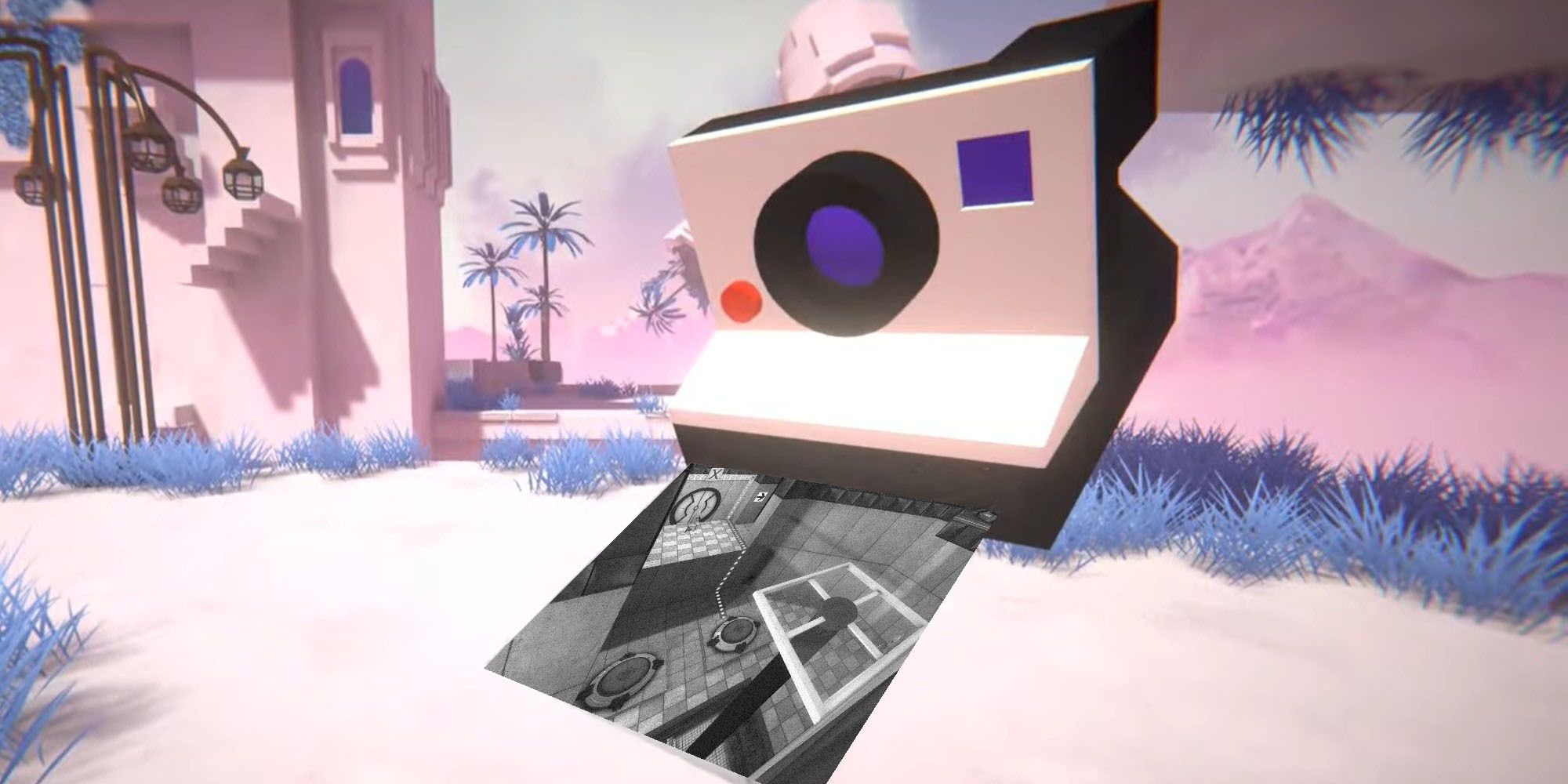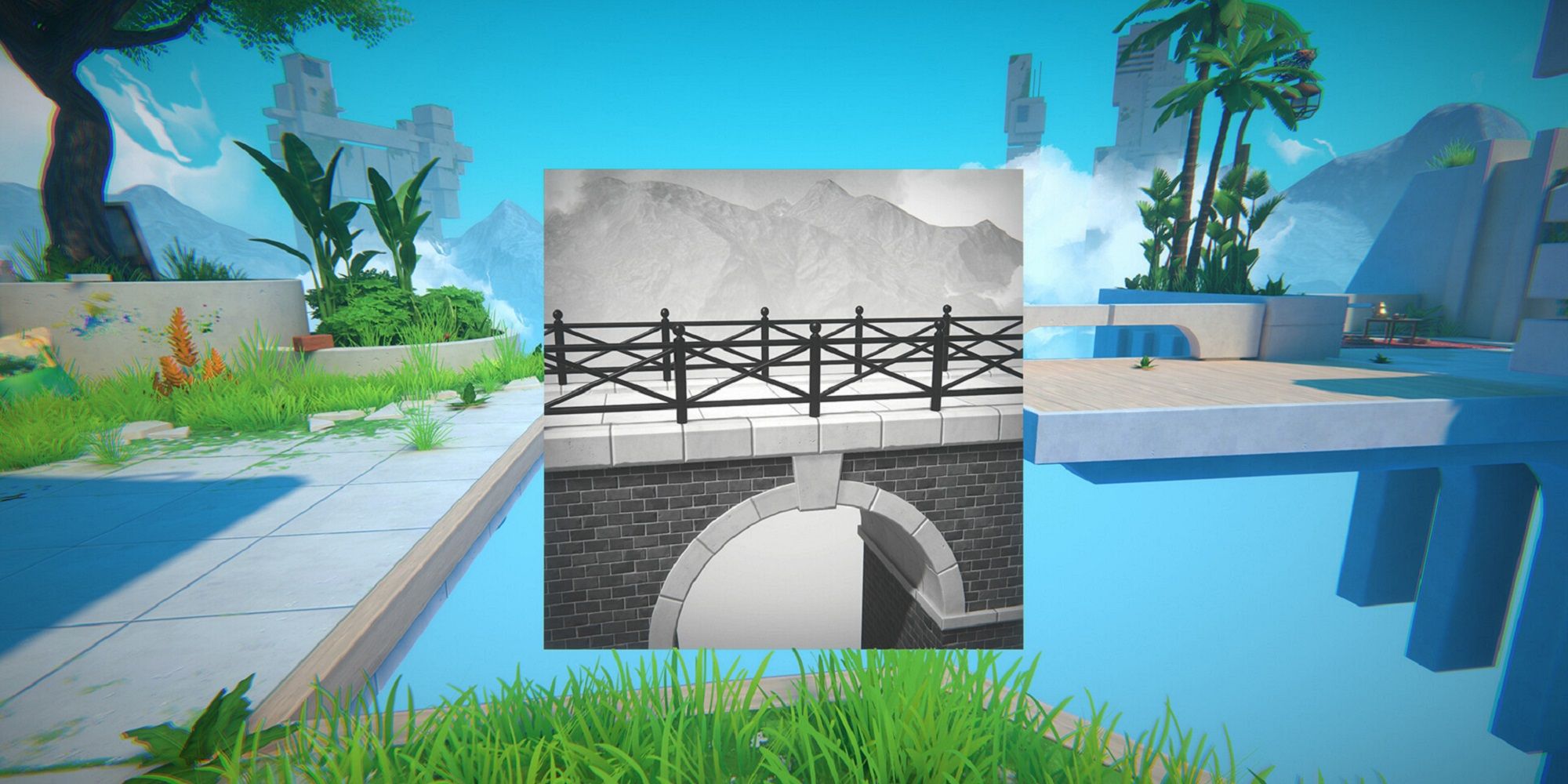Viewfinder has a great premise. You snap a picture, and place it into the world you currently inhabit. Then, you walk into said picture. You placed the picture upside down? You’ll be walking on the ceiling. On a slant? You’ll go up it like a ramp. It’s an ingenious mechanic and, you can see exactly why early footage of the game was a viral internet sensation, but the implementation of said mechanic is even better than I could have imagined, simultaneously encouraging creativity and giving unique solutions to relatively simple puzzles.
The premise of each puzzle is simple. Get to the end, where a teleporting machine which will transport you to the next level. Sometimes it’s behind a fence. Sometimes it’s across an impossible gap. Other times it requires batteries to be operated. Anyone who’s played Portal will know that being able to see the exit doesn’t mean it’ll be easy to get there.
Early levels of the Viewfinder demo in Steam Next Fest don’t even give you the camera that creates the game’s central mechanic. To introduce the mechanic, you instead pick up pre-taken photos or artwork, and can overlay them on your surroundings to progress. These levels might actually be more difficult than when you can take your own pictures, but there’s not so much creativity at your disposal, so it’s a sensible starting point.
One surprise in the demo was picking up paintings or drawings to use as paths across each level. I hadn’t thought it would be an option, but the developer cleverly allows you to enter houses made of crayola or walk through scribbled worlds that would look at home in 2020 indie visual novel If Found…, to reach your destination. This game isn’t just puzzles, it has layers, and I can only imagine the finished article will double down on these interesting settings.
However, it’s when you get the camera that you unlock all of Viewfinder’s possibilities. My colleague Eric Switzer has already detailed how speedrunners are unlocking all sorts of funky traversal methods to shoot themselves across maps, but even regular players like you or I can come up with interesting routes through each puzzle. Taking a photo of a battery and then placing it in the sky so gravity pulls it down towards you is a basic trick, but doesn’t get old. Manipulating photos of stairs to ascend to new heights is a personal favourite, but one level included pictures of Tetris and 2D platformer-style screens, which I didn’t quite work out how to utilise. I’m excited to jump back in and try some proper platforming using those images, but it just goes to show that your only limit is your creativity. There are a seemingly infinite number of ways to complete each level, and every one is as fun as the last.
It’s reminiscent of Portal, except with even more creative solutions. The batteries in particular are ripped straight from Valve’s classic, but I’m also impressed on the same level as I am Tears of the Kingdom. The latest Zelda entry has an incredible amount going on under the hood to make all of its Ultrahand physics work perfectly, and I feel the same about Viewfinder. I never experienced a photo glitching, no matter where I placed it. The rewind function helps if you accidentally slap a photo over the teleporter and softlock yourself, but that’s the only real use for that feature so far. Whether you place a picture in the air above you, right beneath you, or at any angle covering any part of the level, the game competently overlays the new platforms. I have no clue how it works, but the effect is magnificent.
Viewfinder is innovative and creative in equal measure. I hesitate to use the word unique when describing games, because 90 percent of ideas have been done in some form before. But Viewfinder is unique. It’s got a killer mechanic that it implements perfectly into interesting levels with myriad possible solutions, and I can’t wait to see how it expands on its demo.




